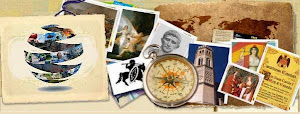What is Collective Imagination | Psychology Concepts.
In every community or group of people exists a collective imagination, i.e. a set of symbols, customs or memories that have specific meaning to it and common to all the people who are part of it.
For example, in Western countries there is a predominant religion is Christianity. Even for people who aren't Christians, the symbols of Christianity, the history and the values are well known. The vast majority of people know the story of Jesus, and some other Biblical characters, are part of the so-called "collective imagination".
By contrast, in Eastern countries, there are other religions that have there, more followers, as is the case of Buddhism, Islam, etc. In these countries we find a collective imagination quite distinct from the previous one, multi-cultural due to differences.
This set of "images" will be built over time through culture, arts, history and customs of a people.
We can cite as part of this imaginary legends and myths, that of so known end up influencing literature, theater, dance, etc. These representations often exceed the reality and acquire so hard they become symbols of an entire era in the history of the people, regardless of religion, politics or culture.
With the creation of the media, increasingly fast and effective, this collective imagination has expanded, so that communities can share their symbolic heritage. With these changes have created a new term called "global village" which would correspond to the junction of all communities into one, thus replacing the concept of "people".
The collective imagination, therefore, can be assimilated by a community, a people, or all over the global village. To better understand, consider
There are symbols known only by a city, State, country or even worldwide.
There are concepts that are universal, i.e. they are so well known that become unquestionable, assimilated by all. Just as there are individual concepts, which are more abstract and completely debatable because it is something subjective.

For example, in Western countries there is a predominant religion is Christianity. Even for people who aren't Christians, the symbols of Christianity, the history and the values are well known. The vast majority of people know the story of Jesus, and some other Biblical characters, are part of the so-called "collective imagination".
By contrast, in Eastern countries, there are other religions that have there, more followers, as is the case of Buddhism, Islam, etc. In these countries we find a collective imagination quite distinct from the previous one, multi-cultural due to differences.
This set of "images" will be built over time through culture, arts, history and customs of a people.
We can cite as part of this imaginary legends and myths, that of so known end up influencing literature, theater, dance, etc. These representations often exceed the reality and acquire so hard they become symbols of an entire era in the history of the people, regardless of religion, politics or culture.
With the creation of the media, increasingly fast and effective, this collective imagination has expanded, so that communities can share their symbolic heritage. With these changes have created a new term called "global village" which would correspond to the junction of all communities into one, thus replacing the concept of "people".
The collective imagination, therefore, can be assimilated by a community, a people, or all over the global village. To better understand, consider
- community as the least of these groups being composed of a group of people organized under a set of rules, who live in the same society and share the same cultural and historical heritage;
- people referring to a larger group of people belonging to the same country or continent, a religion or ethnicity;
- and the global village as a recent term defined by Canadian philosopher Marshall McLuhan, which proposed a joint around the planet in a single "village" due to technological progress make every day easier information sharing, as has been said above.
the) symbols
The term symbol is composed of two parts: the signifier (which is something belonging to the concrete reality) and significance (abstract representation which can be determined by a religion, a nation, a historical fact, etc.).There are symbols known only by a city, State, country or even worldwide.
b) concepts
Is an idea or notion, a conception of something made by mind and expressed by words, allegories, comparisons or symbolic representations.There are concepts that are universal, i.e. they are so well known that become unquestionable, assimilated by all. Just as there are individual concepts, which are more abstract and completely debatable because it is something subjective.
c) memory
Ability to store and retrieve a data or information and may be individual or collective. In the case of collective imagination obviously we work with data that can be expressed by a certain group of people and that has meaning in common.d) Imagination
Mental capacity that allows the creation and representation of objects, as these can be perceived by the mind through the senses.Published for educational purposes
